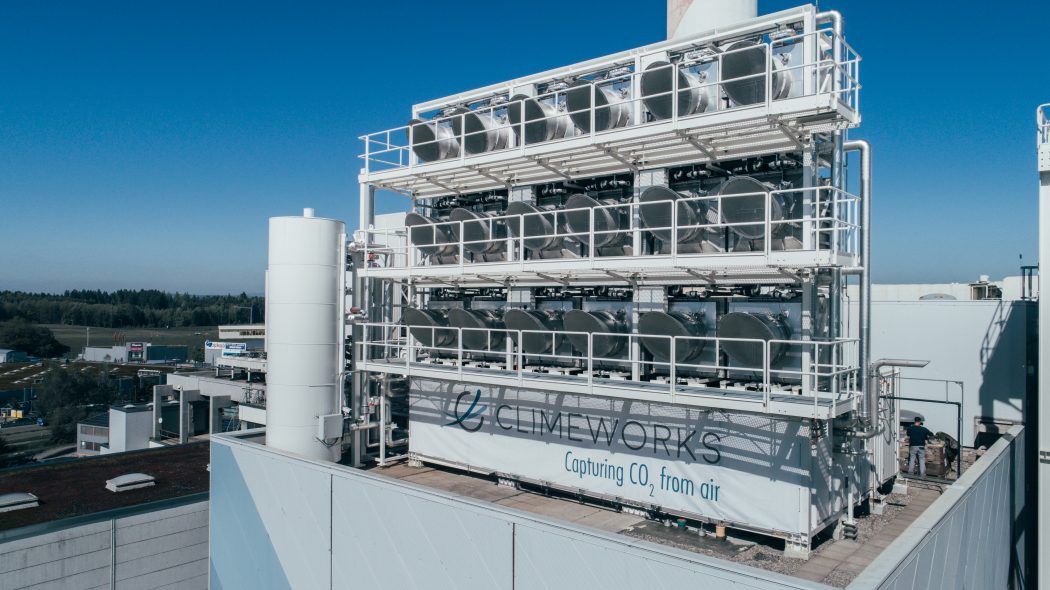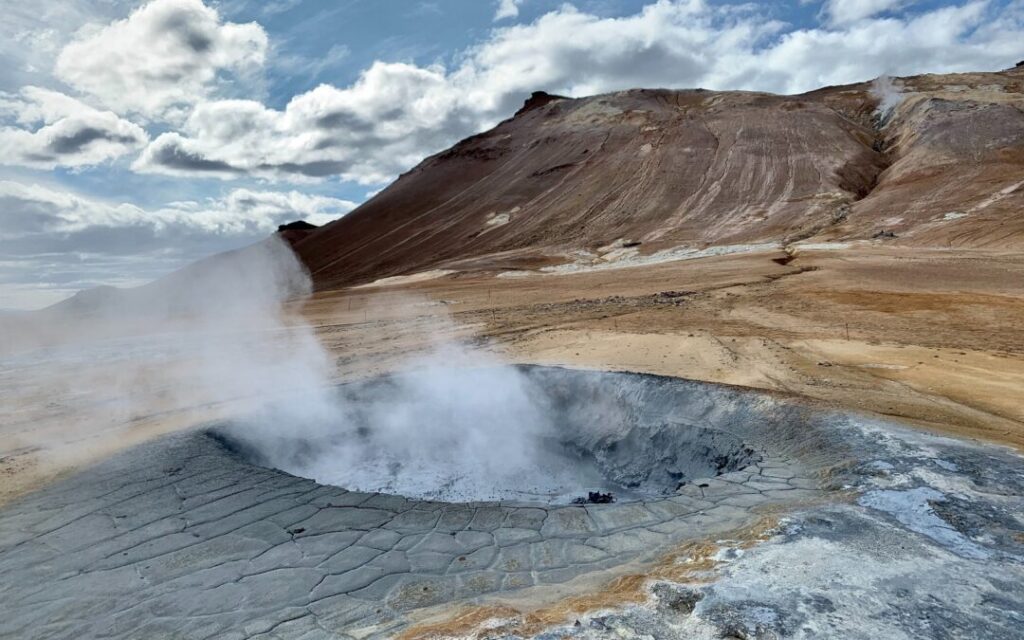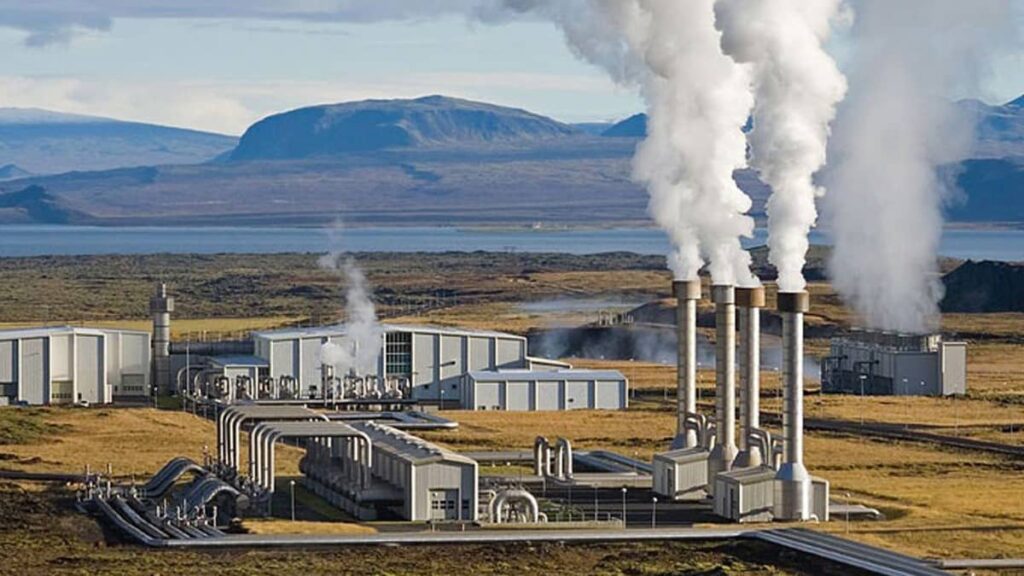
Harnessing Geothermal Energy for CO2 Capture and Storage through Carbon Removal Technologies

Table of Contents
In the quest to combat climate change, researchers have unveiled a groundbreaking method that marries the power of geothermal energy with direct air carbon dioxide capture (DACC) technologies. Published in Environmental Research Letters, this study introduces a novel approach, coined Direct Air CO2 Capture with CO2 Utilization and Storage (DACCUS), which holds the promise of efficiently removing carbon dioxide from the atmosphere and sequestering it underground.
Whats is Geothermal Energy?
Geothermal energy is a renewable energy source that harnesses the heat from the Earth’s interior to generate electricity and provide heating. This energy is produced from the natural heat stored beneath the Earth’s surface, which can be accessed through geothermal reservoirs. These reservoirs are formed by the accumulation of hot water or steam from the Earth’s internal heat, often located in regions with high volcanic activity or tectonic plate movement. Geothermal energy is considered sustainable because the Earth’s heat is virtually inexhaustible over human timescales. By tapping into this resource, we can produce a reliable, low-emission source of power that reduces dependency on fossil fuels, contributing to a cleaner, greener environment.

One of the key advantages of geothermal energy is its ability to provide consistent, baseload power generation. Unlike solar or wind energy, which are intermittent and depend on weather conditions, geothermal plants can operate continuously, 24/7. This makes geothermal energy a highly dependable option for countries looking to diversify their energy mix and reduce carbon emissions.
Additionally, geothermal energy has a relatively small land footprint compared to other renewable sources, making it suitable for densely populated or land-scarce regions. As technology advances, the potential for expanding geothermal energy usage worldwide becomes increasingly promising, offering an essential solution to combat climate change and meet global energy demands sustainably.
The Need for Carbon Removal Technologies
Carbon dioxide (CO2) emissions, largely originating from the burning of fossil fuels for activities like electricity generation, heating, and transportation, are a major contributor to climate change. These emissions significantly increase the concentration of greenhouse gases in the atmosphere, leading to global warming, rising sea levels, and more frequent extreme weather events. As the world continues to industrialize and urbanize, the amount of CO2 released into the atmosphere has surged, making it crucial to address the imbalance between CO2 emissions and natural carbon sequestration. While efforts to reduce emissions through cleaner energy sources are vital, they may not be enough to meet climate targets in time, highlighting the need for innovative carbon removal technologies.
To effectively mitigate climate change, it is essential to explore and deploy carbon removal technologies that can actively capture and store CO2 from the atmosphere. These technologies, such as direct air capture, soil carbon sequestration, and bioenergy with carbon capture and storage (BECCS), are designed to complement emission reduction efforts by directly addressing the excess carbon in the environment. By removing CO2 from the air and storing it safely, carbon removal solutions can help reverse some of the damage caused by historical emissions, accelerate the path to net-zero emissions, and contribute to the long-term stability of Earth’s climate.

Led by Martina Leveni and her team at Ohio State University, this innovative solution addresses the urgent need to reduce greenhouse gas emissions by tapping into renewable energy sources and advancing carbon capture technologies.
The accumulation of these gases in the atmosphere exacerbates global warming and its associated impacts, including rising temperatures, sea-level rise, and extreme weather events. Recognizing the urgency of addressing this issue, scientists and policymakers have sought effective strategies to mitigate carbon dioxide emissions.
Carbon removal technologies, including direct air carbon capture (DACC), have emerged as critical tools in this endeavor. Unlike traditional mitigation approaches that focus on reducing emissions at the source, DACC offers the potential to capture carbon dioxide directly from the ambient air, thereby targeting emissions that are difficult to eliminate through other means.
The Birth of DACCUS
Integrating Geothermal Energy with Carbon Capture The concept of Direct Air CO2 Capture with CO2 Utilization and Storage (DACCUS) represents a pioneering initiative that combines the principles of DACC with the renewable energy source of geothermal energy.
Conceived by Martina Leveni and her team at Ohio State University, DACCUS seeks to leverage the natural heat stored beneath the Earth’s surface to power carbon capture and storage systems. This innovative approach stems from a recognition of the complementary nature of geothermal energy and carbon capture technologies, as well as the potential synergies that arise from their integration.
By harnessing geothermal energy to drive carbon capture processes, DACCUS aims to not only reduce greenhouse gas emissions but also minimize the environmental footprint associated with traditional carbon capture methods.
Unveiling the Mechanics of DACCUS
At the heart of the DACCUS methodology lies the utilization of deep saline aquifers, and underground geological formations containing sedimentary rock and saltwater, as reservoirs for both geothermal energy production and carbon dioxide storage.
The process begins with the extraction of carbon dioxide from the ambient air using direct air capture technologies. This captured carbon dioxide is then injected into the deep saline aquifers for storage, where it is isolated from the atmosphere.
Concurrently, the natural heat present within these geologic formations is tapped through geothermal wells, allowing for the continuous production of renewable energy. The circulation of carbon dioxide within the aquifers facilitates the extraction of geothermal heat, which can be utilized directly or converted into electricity to power the carbon capture system.
This integrated approach maximizes energy efficiency while minimizing environmental impact, making DACCUS a promising solution for sustainable carbon management.
Evaluating the Environmental Impact and Feasibility
Compared to conventional carbon capture methods, which often rely on fossil fuels and contribute to additional greenhouse gas emissions, DACCUS offers a more environmentally friendly alternative. Geothermal energy, known for its low carbon footprint, serves as a clean and renewable power source for driving carbon capture processes.
Furthermore, the selection of the U.S. Gulf Coast region as a potential deployment site for DACCUS is informed by its abundant geothermal resources and favorable geological characteristics. The region’s ample heat flux and geologic suitability for carbon dioxide storage make it an ideal candidate for implementing large-scale DACCUS systems.
By leveraging existing infrastructure and natural resources, DACCUS demonstrates the feasibility of integrating renewable energy and carbon capture technologies to combat climate change effectively.
Projecting the Future
Timeline and Potential Deployment Despite its transformative potential, the implementation of DACCUS requires careful planning and phased deployment. The priming of the geothermal heat extraction system, akin to starting a car engine, necessitates approximately five years of carbon storage from point sources such as industrial facilities before DACCUS facilities can commence air capture operations.
Assuming operational readiness by 2025, DACCUS systems could feasibly begin removing carbon dioxide from the atmosphere by 2030. Projections indicate the possibility of establishing up to 25 DACCUS systems within the Gulf Coast region alone by 2050, underscoring the scalability and long-term viability of this innovative approach.
By adhering to rigorous technological standards and policy frameworks, DACCUS holds the potential to accelerate carbon removal efforts and facilitate the transition to a more sustainable energy future.
Related Posts







